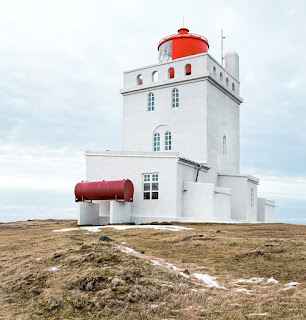I first visited the land of the Vikings in 1984, and returned regularly until 1994. Back then you could walk around the capital and see the sights in half a day. No more, I found during my recent visit that the city has grown with high rise apartments and businesses sprouted where there was nothing. There are expressways and most of the former country roads are paved. Back in the old days there few places to eat or a room to spend the night in the back country. Now you cannot travel more than 3 miles without seen signs for a B&B. The roads are fenced and trees have been planted when no trees were to be seen before. I do recall driving during whiteouts always afraid to run into wild ponies but they no longer roam free.
I maintained contact throughout the years with my Viking friends; they regularly visited the USA mostly to go to Disney World and for shopping sprees. I also served as a depot to have their vehicle spare parts sent for forwarding to Iceland. It was time for me to collect; they treated me like loyalty, drove around, and most important, facilitated for me to go to places where tourists seldom set a foot. For example, we drove to the caldera of the volcano that recently disrupted airline flies over part of Europe; is the second image below of a snow drift tower taken at night time.
There are basically 2 seasons in Iceland, winter and summer. I prefer winter since with an all-terrain vehicle one can go anywhere because the ice/snow, not need for roads…and there is the thrill of falling into a crevasse. Yes, there are geysers, fumaroles, hot lagoons and other formations of tectonic origins, but don’t go there just for just that, since you can see bigger and more active ones in Yellowstone. Travel cross-country requires powerful vehicles and hardy Vikings to break the ice as seen in the video below. We were able to drive to the caldera of the volcano that caused flight cancellations over Europe in 2012.
In the early 80’s when I first visited, alcoholic beverages were not allowed in Iceland and beer was a smuggled commodity. Now you can have a Viking with some typical Icelandic delicacies…if you are brave. You can have whale meat, puffins as well as other seabirds and Hakarl, fermented shark meat. Hakarl smells and tastes like formaldehyde, a reaction from a brave taster is below. Images taken with an iPhone so the quality is not the best but illustrates the point.
Winter offers the best opportunities to photograph the aurora borealis (northern lights), ice caves and just landscapes in general; several images are below. Note that in the first ice cave there is a frozen alien towards the upper right side. Back in the old days, you could have a cave all to yourself, no more, now the tourists come by the busload and one have to wait until they leave and hurry up before the other arrives. Iceland is not a tourist mecca.
Wildlife is scarce since most birds have migrated and the only endemic mammal is the arctic fox that is hard to find but I was lucky again. The old barn has an overhang of lava rock, although I do not how this happens I assume that the lava flow stopped and the barn was partially covered by it.
Black Beach is where blocks of ice that calved from the nearby Myrdalsjokull glacier are deposited. All kinds of sizes and shapes, one can spend days photographing here and most favorable time would be at sunrise so the sunlight can be caught going through the ice. You can imagine giant diamonds (2 versions of the diamond ice block attached; choose the one you like best) as well as animals shaped ice sculptures carved by nature. By the way for those into photography, I used a Canon 5S for these photos; this camera has delivered disappointing images due to their high noise levels and slow buffer.
The Dyrholaey Nature Reserve offers great opportunities for walking starting at the lighthouse and descending the trail to the beach. The famous sea arch is below and at Kirkjufjara beach one encounters interesting rock formations and caves of volcanic origin with ice stalactites of various sizes and shapes; the last image remains me of an octopus.


































